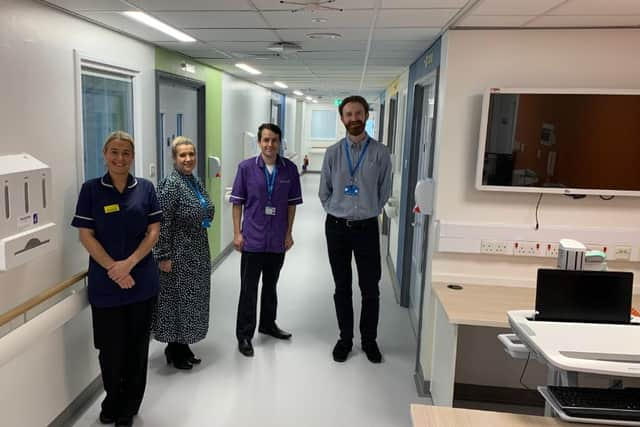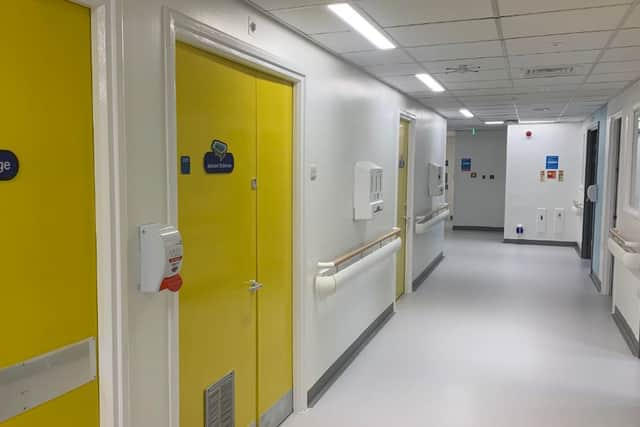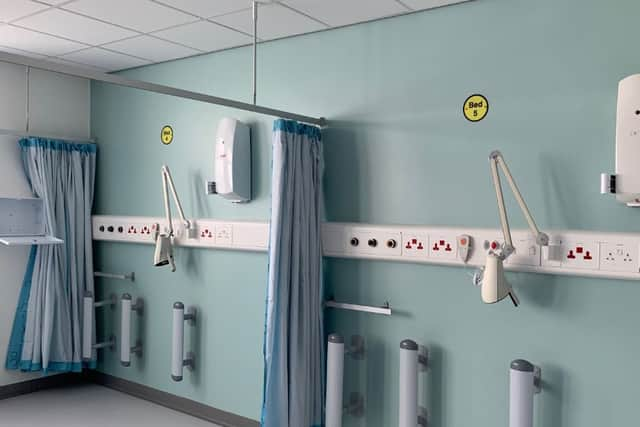South Tyneside's NHS Trust launches its first 'fully dementia-friendly' hospital ward
South Tyneside and Sunderland NHS Foundation Trust has officially opened its first fully dementia-friendly inpatient ward at South Tyneside District Hospital.
The specialist ward is designed to improve the experience of older people when they need to stay in hospital.
Advertisement
Hide AdAdvertisement
Hide AdBased in Ward 8, it is the first of a series of refits across the Trust that will use features that are proven to have a calming influence or can help avoid confusion.
The ward was initially used during the pandemic as an Intensive Care Unit but was freed up after a tailor-made £3 million replacement was set up on its ground floor.


The design choices that are now based in the ward include:
- Walls painted in pastel colours to create a calm environment.
- Diffused lighting to reduce shadows, which can cause people to trip or cause upset if someone is experiencing hallucinations.
- Colour-coded bays which are blue on one side and green on the other, helping patients identify their own bed more easily if they are returning to their space.
- Toilet doors painted in bright yellow, with images added so those who struggle with words know where to find the loo.
- Entrances to each room or bay are painted their own colour and are numbered to help guide people to where they are recuperating.
- Doors to staff areas and the rooms beyond are painted white, so they blend in with the main corridor.
Read South Tyneside's news on the go with our free email newsletters - bringing the headlines to your inbox. Catch up on the day's news and sport and enjoy even more from your Gazette. Visit our website here to find out more and sign up.
Chris Cairns, the NHS Trust’s Nurse Consultant for Older Persons, has led the dementia-friendly design alongside CHoICE, the Trust's subsidiary which runs its facilities.
Advertisement
Hide AdAdvertisement
Hide Ad

He said: “We’ve worked hard to incorporate many features into the refit of this ward, putting research into practice to help keep them safe.
“We know staying in hospital, which is somewhere unfamiliar and can be quite busy, is an unsettling time for anyone if they’re feeling unwell or recovering from an injury or surgery.


“We know it’s extra hard for those who have dementia, are experiencing delirium or maybe struggle to see or hear as well as they once did.
“Now it will be very clear which areas are for them.
“Even something as simple as being able to say to someone, ‘Your bed is in the green area’ will be much easier for them to understand than if we point to numbers or words.
Advertisement
Hide AdAdvertisement
Hide Ad

“We’ve already used diffuse lighting in other areas and we know it helps because patients don’t think they’re going to trip over what is really a shadow or think it’s something it’s not if they are experiencing delirium.
“Now the ward is finished, I think it looks really good, it’s bright, modern and will be a real asset to our Trust. Most of all, it will make a difference to our patients.”